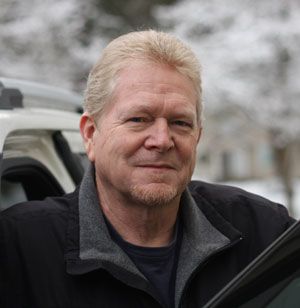Bicycle ridership rising
Recent events and travel restrictions are affecting bicycle use — it’s increasing. Here and elsewhere, bicycle demand and resulting ridership are notably rising as more people than ever seem to be choosing bicycles as an alternative to automobiles, buses or ride-sharing.
So let’s review some of Washington’s laws governing bicycles upon the roadways. Such laws are typical among states, but it’s always best to check local particulars.
First, a Washington law reminds riders to obey traffic control devices. RCW 46.61.050 specifies: The driver of any vehicle, every bicyclist, and every pedestrian shall obey the instructions of any official traffic control device applicable thereto placed in accordance with the provisions of this chapter, unless otherwise directed by a traffic or police officer.
I ponder why many bicyclists — sometimes me — ignore stop signs when pedaling. Certainly, our vulnerability amid cars and trucks should warrant stopping where they are required to.
Another RCW, 46.61.755, reads: (1) Every person riding a bicycle upon a roadway shall be granted all of the rights and shall be subject to all of the duties applicable to the driver of a vehicle by this chapter, except as to special regulations in RCW 46.61.750 through 46.61.780 [bicycle-specific section] (2) Every person riding a bicycle upon a sidewalk or crosswalk must be granted all of the rights and is subject to all of the duties applicable to a pedestrian by this chapter.
The second provision refutes the popular notion that bicycles are not allowed on sidewalks — that restriction is a municipal code only for downtown. In case there’s any doubt that bikes are indeed allowed there, RCW 46.61.261 reveals: The driver of a vehicle shall yield the right-of-way to any pedestrian or bicycle on a sidewalk. The rider of a bicycle shall yield the right-of-way to a pedestrian on a sidewalk or crosswalk. So, the law specifically allows bicycles on sidewalks but stratifies the “pecking order” as to who yields to whom.
One RCW, 46.61,758, spells out the requirement for bicyclist hand signals, reading: All hand signals required of persons operating bicycles shall be given in the following manner: (1) Left turn. Left hand and arm extended horizontally beyond the side of the bicycle; (2) Right turn. Left hand and arm extended upward beyond the side of the bicycle, or right hand and arm extended horizontally to the right side of the bicycle; (3) Stop or decrease speed. Left hand and arm extended downward beyond the side of the bicycle. The hand signals required by this section shall be given before initiation of a turn. Notice those are the same manual signals we all learned in driver’s education classes, with the exception of the right turn signal that can be made with either arm from a bicycle.
Another RCW specific to bicyclists disallows carrying more persons than capacity (one for standard bike, two for tandem), and another that prohibits attaching a bike to a motor vehicle.
Although bicycles must travel on roads as far to the right as is safe and not ride more than two abreast (RCW 46.61.770), bicycles DO have a right to be there. When equipped with headlight and rear reflector (RCW 46.61.780), bicycles are legal to ride at night too. For that, I recommend a flashing rear light (a named alternative in the RCW) in addition to a reflector.
Knowledge enhances safety for both drivers and riders.
Readers may contact Bill Love via e-mail at precisiondriving@spokesman.com.
